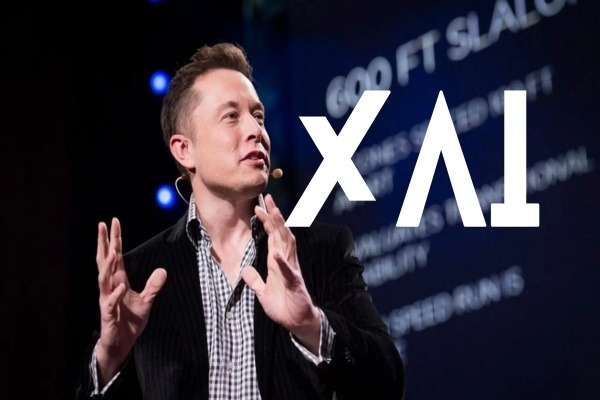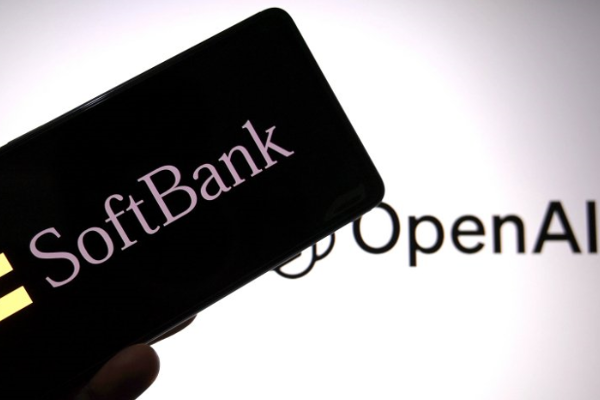Stablecoins surged past 235 billion, while altcoins did not. Where is the money?
Since 2024, the global stablecoin market has exceeded 235 billion US dollars with a growth rate of 80.7%, and USDT and USDC continue to dominate the market with a growth contribution rate of 86%. But what is puzzling is that the incremental funds of hundreds of billions of dollars deposited on the Ethereum and Tron chains have not driven the simultaneous outbreak of the altcoin market as in previous cycles. Data shows that every additional $1 of stablecoins in this round only leverages $1.5 of altcoin market value growth, which is 82% less than the previous bull market.
This article will analyze the ultimate crypto problem brought about by the growth of stablecoins through a comprehensive data analysis of stablecoins: Where did the money go? While the balance of trading platforms has skyrocketed and the amount of pledged DeFi protocols has increased, the over-the-counter transactions of traditional financial institutions, the penetration of cross-border payment scenarios, and the demand for currency substitution in emerging markets are quietly reshaping the capital flow map of the cryptocurrency world.
The market value of stablecoins increased by 100 billion US dollars, and Ethereum and TRON still contributed 80% of the growth
According to data from defillama, from the beginning of 2024 to the present, the issuance of stablecoins has increased from 130 billion US dollars to 235 billion US dollars, with an overall increase of 80.7%. Among them, the main growth still comes from the two stablecoins UDST and USDC.
On January 1, 2024, the issuance of USDT was 91 billion US dollars. As of March 31, 2025, the issuance of USDT was 144.6 billion US dollars, an increase of about 53.6 billion US dollars, and the growth rate contributed 51%. The issuance of USDC in the same period increased from 23.8 billion US dollars to 60.6 billion US dollars, accounting for about 35% of the growth. These two stablecoins not only occupy 87% of the market share, but also contribute 86% of the growth.
Looking at the on-chain data, Ethereum and Tron are still the two public chains with the largest issuance of stablecoins. Ethereum's stablecoin issuance accounts for 53.62%, Tron's accounts for about 28.37%, and the total accounts for 81.99%.
Among them, Ethereum's stablecoin increment from January 1, 2024 to April 3, 2025 is about 58 billion US dollars, with a growth rate of 86%, which is basically the same as the issuance growth rate of USDT and UDSC. Tron's growth rate is about 34%, which is lower than the overall growth rate of stablecoins.
The third public chain is Solana, with an increase of 12.5 billion US dollars in issuance during the same period, a growth rate of 584.34%. The fourth is Base, with an increase of 4 billion US dollars in issuance, a growth rate of 2316.46%.
Among the top ten, Hyperliquid, TON, and Berachain have only started to issue stablecoins in the past year. These three companies have added about $3.8 billion in stablecoin issuance, contributing 3.6% of the stablecoin growth share. Overall, Ethereum and Tron are still the main markets for stablecoins.
Every $1 in new funds only leverages $1.5 in altcoin market value
Although the on-chain growth of stablecoins is rapid, the growth of altcoin market value during the same period is not ideal.
In comparison, in March 2020, the overall altcoin market value was about $39.8 billion (excluding BTC and ETH). By May 2021, the altcoin market value rose to $813.5 billion. The increase was about 19.43 times. The stablecoin data growth during the same period increased from $6.14 billion to $99.2 billion, an increase of about 15 times, which was basically synchronized. The increase was basically synchronized.
In this round of bull market, the overall market value of stablecoins increased by 80%, but the overall market value of altcoins increased by only 38.3% during the same period, an increase of about 159.9 billion US dollars.
Looking back, in the 2020-2021 cycle, for every $1 increase in stablecoins, the overall market value of altcoins increased by $8.3. But in the 2024-2025 cycle, for every $1 increase in stablecoins, the market value of altcoins only increased by $1.5. This ratio has shrunk significantly, which means that the newly added stablecoins do not seem to be used to buy altcoins.
Where did the money go? This is a key question.
Reshuffle of the public chain pattern: Ethereum and Tron defend the territory, Solana and Base break the game and grow
Intuitively speaking, the MEME craze on Solana has always led this round of bull market in this cycle. However, in the hype of MEME, SOL trading pairs are basically used, and there is not much room for stablecoins to participate. And from the results analyzed in the previous article, the growth of stablecoins still mainly stays on Ethereum.
Therefore, to find out where the growth of stablecoins has gone, it is probably still necessary to analyze the trends of major stablecoins such as Ethereum or USDT, USDC, etc.
Before the analysis, perhaps several possible directions can be listed, which is also the general speculation on the direction of stablecoins in the market. For example, stablecoins are more used for payment scenarios, pledge income, value storage, etc.
Let's first look at the stablecoin transactions on Ethereum. From the figure below, we can see that the trading volume fluctuations of stablecoins show regular fluctuations like heartbeats. Behind this fluctuation, there may be a law of the use of stablecoins.
When the cycle is shortened, it can be clearly seen that the law of this fluctuation is 5+2 fluctuations, that is, 2 days of depression and 5 days of peak. After observation, it can be seen that the trough period is the weekend, and the peak period is basically from Monday to Wednesday, gradually rising, and gradually decreasing on Thursday and Friday. This obvious volatility pattern seems to at least indicate that the transaction initiators of these stablecoins are mainly from institutions or enterprises. After all, if it is dominated by consumer payment scenarios, it should not show such volatility.
In addition, from the perspective of daily transaction frequency, the peak daily transfer number of USDT on Ethereum does not exceed 300,000 times, and the transfer frequency and average transfer amount on weekends are usually much lower than on weekdays. It also further confirms the above inference.
USDT pours into trading platforms, USDC precipitates DeFi protocols
From the distribution of holdings, the balance of USDT on trading platforms has increased significantly in the past year. The balance of the trading platform on January 1, 2024 was 15.2 billion, and by April 2, 2025, this number increased to 40.9 billion, an increase of US$25.7 billion, an increase of 169%. This increase is much higher than the 80.7% increase in the overall issuance of stablecoins, and accounts for 48% of the increase in USDT issuance during the same period.
In other words, over the past year or so, about half of the new issuance of USDT has flowed into trading platforms.
However, the situation of USDC in the same period is quite different. On January 1, 2024, the trading platform held about 2.06 billion USDC, and by April 2, 2025, this number increased to 4.98 billion. During the same period, the issuance of USDC increased by 36.8 billion, and only 7.9% of the new issuance flowed into the trading platform. The overall balance of the trading platform accounted for only 8.5%, which is a big gap compared with USDT's 28.4%.
Most of the new issuance of USDT flowed into the trading platform, but the new trading volume of USDC did not enter the trading platform.
So where does the new USDC flow go? This may explain to some extent where the funds in the market flow.
From the perspective of the coin holding address, the top few USDC coin holding addresses are basically from the DeFi protocol. Taking Ethereum as an example, the largest USDC coin holding address is Sky (MakerDAO), with 4.8 billion coins, accounting for about 11.9%. In July 2024, the number of coins held by this address was only 20 million, which increased by 229 times in less than a year. Sky's USDC is mainly used as a collateral asset for its stablecoins DAI and USDS. Overall, the growth of USDC at this address still represents the demand for stablecoins due to the growth of DeFi protocol TVL.
AAVE is the fourth largest USDC coin holding address on Ethereum. On January 1, 2024, AAVE held approximately 45 million USDC. By the peak point on March 12, 2025, the USDC held by this address increased to 1.32 billion, an increase of approximately $1.275 billion, accounting for 7.5% of the new USDC issuance on Ethereum.
From this perspective, the increase in USDC on Ethereum is mainly due to the growth of staking products. At the beginning of 2024, the total TVL of Ethereum was approximately $29.7 billion. Although it has declined recently, there is still a stock of $49 billion (the TVL at the peak reached $76 billion). Calculated at $49 billion, the TVL growth rate on Ethereum can also reach 64.9%, which is much greater than the growth rate of altcoins last year and is close to the overall growth rate of stablecoins.
However, in terms of scale, although the TVL on Ethereum has increased by 19.3 billion US dollars, there is still a big gap compared with the 58 billion scale of Ethereum stablecoins. In addition to some new issuances contributed by trading platforms, pledge protocols have not absorbed all the incremental amounts of these stablecoins.
The rise of new scenarios: paradigm shift from cross-border payments to institutional transactions
In addition to the demand for stablecoins due to the growth of DeFi, consumer payments, cross-border remittances, and over-the-counter transactions of financial institutions may also be new demands for the growth of stablecoins.
According to multiple official materials from Circle, the scenarios of stablecoins are gradually showing their power in scenarios such as cross-border remittances and consumer payments. According to a report by Rise, about 30% of global remittances are achieved through stablecoins. This proportion is particularly significant in Latin America and sub-Saharan Africa. Retail and professional stablecoin transfers in Latin America and Sub-Saharan Africa increased by more than 40% year-on-year between July 2023 and June 2024
According to a report released by Circle, the net amount of USDC minted by Zodia Markets, a subsidiary of Standard Chartered Bank, has reached $4 billion in 2024 (Zodia Markets is an institutional digital asset brokerage company that provides services including over-the-counter trading and on-chain foreign exchange to global customers).
Another Latin American retail payment company, Lemon, has clients holding more than $137 million in USDC, and users of the platform mainly use stablecoins for retail payments.
In addition to the increase in demand caused by different scenarios. The different ecological structures of each chain also create different stablecoin needs. For example, the MEME craze on the Solana chain has stimulated the trading demand of DEX. According to incomplete statistics from PANews, the TVL of USDC (top 100) trading pairs on the Solana chain is about 2.2 billion US dollars, calculated according to the rule that USDC accounts for half of the volume. The amount of deposited funds in this part is about 1.1 billion USDC. It accounts for 8.8% of the issuance of USDC on the Solana chain.
The crypto market has shifted from "speculative bubbles" to "new financial products"
After disassembling and analyzing stablecoins, PANews found that it seems difficult to find a direction that is the main driving force for the growth of stablecoins. It is also impossible to explain the question of where the money in the market has gone. But looking back, we may get a series of complex conclusions.
1. The market value of stablecoins is growing, but it is clear that these funds have not flowed into the altcoin market on a large scale, becoming the initial driving force for the arrival of the altcoin season.
2. From the perspective of the Ethereum market, half of the growth of the main stable currency USDT in this part still flows into the trading platform, but it seems more likely to be used to buy BTC (because the markets of altcoins and Ethereum are not financial products on the platform. The remaining growth demand may be absorbed by the DeFi protocol. Overall, the funds flowing into Ethereum pay more attention to the stable returns of pledge and lending protocols. The attraction of the crypto market to traditional funds may no longer be crazy ups and downs, but a new type of financial product.
3. Changes in new scenarios, traditional financial institutions such as Standard Chartered Bank entering the crypto market have also become one of the new demands for stablecoins. In addition, the number of scenarios in which underdeveloped regions choose to adopt stablecoins due to backward infrastructure and unstable exchange rates of their own currencies is also increasing. However, there is still no complete statistical result for this part of the data, and we do not know the specific share.
4. Stablecoins have different narrative needs on different chains. For example, Solana's growth demand may come from the trading popularity of MEME. There are also Hyperliquiquit, Berachain, TON The growth of this new public chain also brings certain capital demand.
Overall, the undercurrent of this capital migration reveals that the crypto market is undergoing a paradigm shift. Stablecoins have broken through the boundaries of simple trading media and become a value channel connecting traditional finance and the crypto world. On the one hand, altcoins have not received large-scale blood transfusions due to the growth of stablecoins. On the other hand, the financial management needs of institutional funds, the rigid payment needs of emerging markets, and the maturity of on-chain financial infrastructure are pushing stablecoins to a broader value-bearing stage. This may indicate that the cryptocurrency market is quietly moving towards a historic turning point from "speculation-driven" to "value precipitation".









